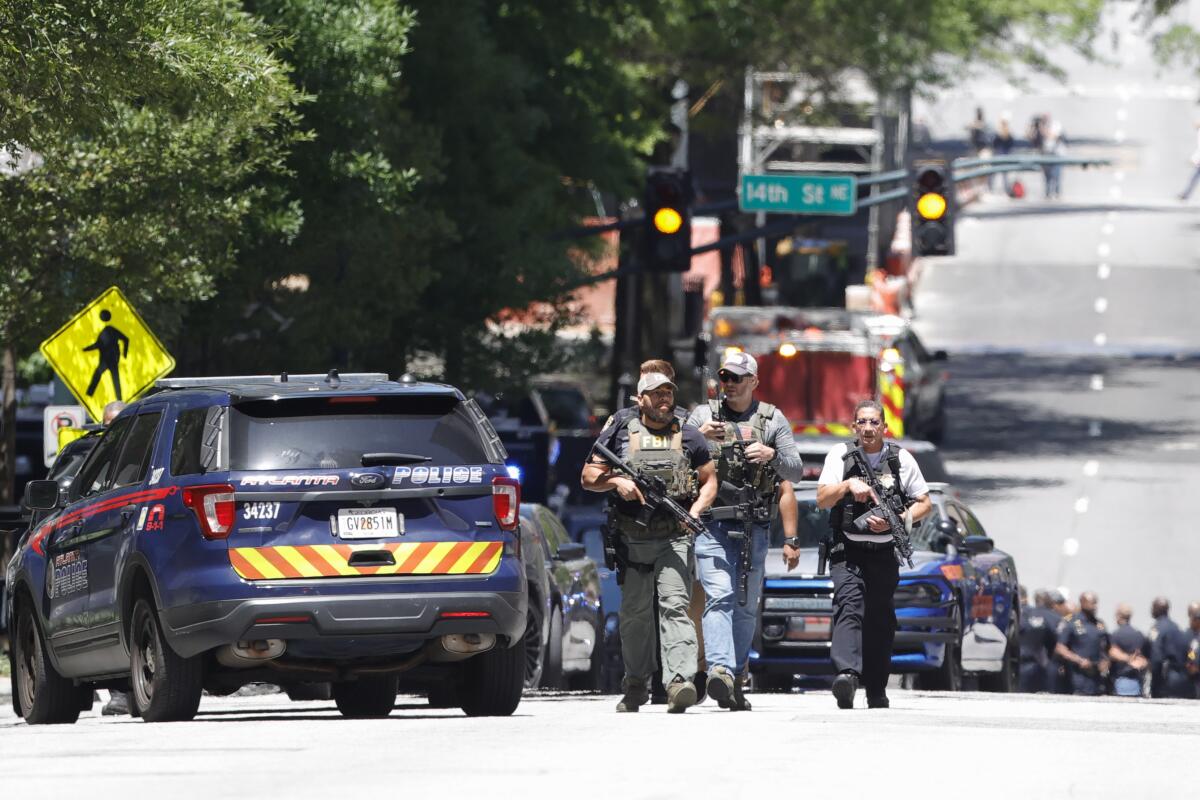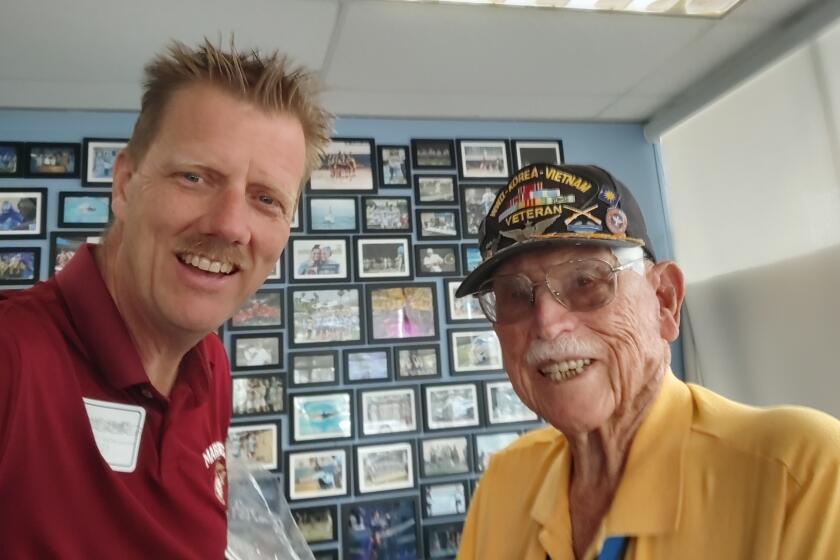Apodaca: We must find effective answers to gun violence

- Share via
I was in Atlanta in early May. As I was about to leave the hotel to visit a museum, word spread of an active shooter at large in the area. Five people had been shot, one fatally and three critically, at a local hospital.
The police advised everyone to stay put indoors until they were sure it was safe. Later they discovered that the shooter had fled the area, and he was captured outside the city.
I wish I could say that this experience was rare. But it was, in fact, tragically ordinary. Just the day before the Atlanta shooting, there had been two mass shootings, defined as an incident in which four or more people are injured or killed: one in Florida and the other in Louisiana.
Two days later there were five. The day after that, another five, including one in California. Over the Memorial Day weekend, 16 people were killed and at least 80 were injured in 20 mass shootings across the country.
By the end of May, there had been 268 mass shootings in the U.S. so far this year, according to data compiled by the Gun Violence Archive. That’s more than one a day. More than any right-thinking person can bear to contemplate.
And those numbers don’t even take into account all the other shootings, the ones with fewer than four victims: the arguments that turn deadly, the suicides, the overreaction to perceived threats and all the other instances when lives are needlessly lost.
Total U.S. gun deaths this year reached 17,744 by the end of last month, the Gun Violence Archive reported. Of those, 755 were children.
If anyone is getting the sense that nowhere is safe from gun violence anymore, they would be correct. We’re not safe. Not on the streets or in our workplaces; not at a mall or a party, a hair salon or a concert, a dance studio or a church or a theater. Our kids aren’t safe at school. Despite the drills, the fences, the stricter check-in procedures, the school resource officers and the efforts of overwhelmed police, they aren’t safe.
We now live in a constant state of anxiety. Two days after the Atlanta shooting, rumors went viral and nerves frayed in Orange County when a vague threat of an impending school shooting surfaced on social media. Local law enforcement agencies downplayed the threat, saying it wasn’t credible, and some authorities said it appeared that the Orange County being threatened was the one in Florida.
Somehow that wasn’t terribly reassuring.
We’re all on edge, and that is a rationale response to the insanity of our current situation. We have an epidemic of gun violence, but we as a nation have lacked the will to take all the necessary steps that we know can help. Instead, we remain stuck in a crazy loop of dysfunction, denial and insufficient half-measures.
That’s not fatalistic. It’s the reality that we have created and continue to tolerate.
Two former Marines living in Orange County with different backgrounds honor the fallen as they recount their experiences ahead of Memorial Day.
While the rest of the world looks at us with confusion and dismay, we do pitifully little beyond condolences and platitudes. We are the richest, most powerful nation on earth, and we are awash in carnage. The incongruity of those facts is mind-boggling, and it’s infuriating.
Newtown didn’t break the loop. Neither did Parkland. Or Uvalde. What more can be said if the slaughter of children isn’t enough for us to ditch our self-destructive ways?
Yet we can’t give up hope or retreat from an all-out effort to see real progress emerge from our shared trauma.
Of course, sensible gun laws that reduce easy access to dangerous weapons — the ones that have been proven time and again to make a difference — have to be part of the response. Voters must put their representatives on notice that if they do not back reasonable regulations, and the judicial appointments that will uphold sound policies, they will lose our support, full stop.
We must also recognize that this is a public health crisis and should be treated as such. Like a virus, gun violence is contagious — people who are exposed to violence are more likely to become violent themselves — and it’s often a byproduct of trauma, poverty and feelings of hopelessness and isolation.
Therefore, robust early intervention is key. We need to foster greater access within at-risk communities to therapy, mentors and support systems that, again, have been clearly shown to help reduce gun violence. Sadly, many of these types of programs are routinely among the first to be cut. We need to be clear that we consider them a top priority.
And we must stop glorifying guns.
It’s true that guns have always been a part of our culture and likely always will.
But when political figures cheerfully pose with their kids for Christmas card and campaign photos as each family member holds an assault weapon; when the gun industry gins up fear, rage, hyped-up patriotism and warped conceptions of masculinity to tout its deadly products; when a small but unduly powerful group of people cling to the logic-defying position that the answer to gun violence is more guns, we must acknowledge that this aspect of our culture has gone terribly wrong.
The majority of Americans who don’t fetishize guns, and who favor common-sense regulations and community support systems, are demanding action. More anguish is certain if our leaders continue to fail.
All the latest on Orange County from Orange County.
Get our free TimesOC newsletter.
You may occasionally receive promotional content from the Daily Pilot.





